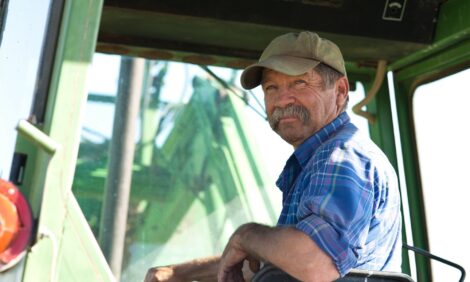



Weekly Outlook - Hog Producers Who Reached 2010 Get to Stick Around
Thank goodness hog producers have put 2008 and 2009 behind them. They lost about $20 per hog produced, which totalled nearly $5 billion in the two years. For them, 2010 represents more than just a New Year, it brings improving prospects for business survival – a breath of fresh air in a financially drowning industry, writes Chris Hurt, Extension Economist at Purdue University.The improving prospects are a result of both reductions in US pork supplies and improving demand. The large losses have resulted in the breeding herd dropping an additional three per cent in 2009, following a similar decline in 2008. Over the past two years, the US breeding herd has dropped by six percent.
In the 1990s and early in the 2000s, hog production tended to grow in areas away from the traditional corn/hog belt. There is some indication that the pork industry is consolidating back to the Midwest. North Carolina has led the decline in the breeding herd over the past two years with a 90,000 head, or nine per cent, decrease. Texas had a 45,000 head reduction, representing 43 per cent of their breeding herd. Other reductions on the geographic fringes include Utah with a 25,000 head (25 per cent) reduction, and Arkansas with a 20,000 head (24 per cent) reduction. California, a relatively small production state, experienced a 65 per cent reduction in the size of the breeding herd in the past two years.
While the breeding herd has been down six per cent over the past two years, pork production has actually increased due to a four per cent increase in the number of pigs per litter and to heavier market weights. This has been the dilemma as reductions in the breeding herd were more than matched by productivity increases.
Domestic consumers will notice much tighter pork supplies in 2010. Pork production in 2010 is expected to be down two to three per cent but domestic availability on a per-capita basis will drop by nearly six per cent. In addition to smaller US production, pork exports are expected to rise ten per cent and US population will grow nearly one per cent.
USDA's forecast is for pork exports to rise to 4.6 billion pounds, which will represent 21 per cent of US production. This is up from about 4.2 billion pounds in 2009, representing just 18 per cent of production. If these added exports do develop, they will represent an additional three to four per cent of US production that moves to foreign consumers and therefore is not available to domestic consumers.
A decline of six per cent in per-capita availability is a relatively large supply reduction but improved demand will also be a critical factor in the drive to higher pork prices in 2010. Export demand increases are one component but domestic demand will improve as well, bolstered by the recovering US economy and by the demise of H1N1 as a daily front page news story.
So how high can prices go, and what about costs of production? First-quarter live prices are expected to average in the higher $40s per hundredweight. The highest prices of the year will likely occur in the second quarter and average in the low $50s. The third quarter is expected to have average prices near $50 and the final quarter in the mid-to-higher $40s. For the year, expect live hog prices to average near $50, or about $67 on a carcass basis.
Unfortunately, total costs of production are also expected to be near $50 to $51 for the year based on corn and meal prices on 4 January 2010. The good news is that costs of production include all costs including full labour return and full depreciation of buildings and equipment. The bottom line is that hog producers are not expected to go backwards financially in 2010.
There is at least some hope that pork prices could be even higher than outlined here. The lean hog futures market is somewhat more optimistic than these forecasts. In addition, when hog prices do turn higher after a slump, they historically have greatly exceeded expectations. But vulnerabilities exist as well, in the form of uncertainties over the level of feed costs; over the strength of the economic recovery; and over trade disputes that could still stifle the anticipated pork export growth.
Margin hedging using lean hog, corn and soybean meal futures should be consider by those who cannot accept the potential consequences of these vulnerabilities.






